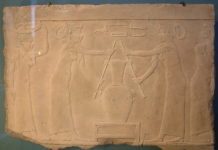Juliet had Romeo. Tristan had Isolde. Abelardo had Heloise. Elizabeth Barrett had Robert Browning. And Don Jose had his Carmen, if only briefly. Love is both eternal and a seemingly eternal source for stories, plays and operas.
And what about pirates? Did they love and receive love in return? Or were they too busy sending broadside cannon fire and spreading grapeshot against frantically fleeing fat merchant ships, and, once having crippled their victims, launching grappling hooks followed by pirates with cutlasses in their teeth?
There are a number of instances in which pirates found love.
Partners in Piracy: Anne Bonny and Captain Calico Jack Rackham
Anne Bonny’s first husband was a shiftless pirate and sailor man by the name of James Bonny. As it transpired, he more than likely married her out of a desire to acquire the rich plantation of her equally rich father. This bore James Bonny no fruit, however, as his wise-to-him father-in-law disinherited his daughter after learning of their marriage.
With the plantation having slipped through his hands like hourglass sand, James Bonny relocated to the Bahamas with his new wife. There he got gainful employment as a stool pigeon to Woodes Rogers, governor of the Bahamas. (Rogers, incidentally, is also remembered for being on the ship in 1709 that rescued Alexander Selkirk, who is regarded as Daniel Defoe’s inspiration for Robinson Crusoe.) Bonny’s job was to turn in seamen– which ended up mainly being those he had longstanding grudges against– as pirates, and received a pretty reward for each head.
Anne Bonny soon grew to despise her rubber-spined husband. Before long she had met and departed to sea with one Calico Jack. This was a match made in pirate heaven. Anne Bonny was fiercely proud and defiant, and Calico Jack was big-spending and handsome and bold.
Anne Bonny fought alongside Rackham on their shipping raids. Bonny, skilled with both the pistol and cutlass, fought in men’s clothing, and proved as brave as any man. She was often seen at the head of boarding parties.
In late 1720, however, the governor of Jamaica sent an armed sloop to capture John Rackham and his crew. Rackham’s ship, named the Revenge, was taken by surprise early one morning. Anne and fellow female pirate Mary Read resisted bravely while the bulk of the crew cowered below deck.
Read and Bonny were captured, as were the rest of Rackham’s crew. After revealing their sexes, Read and Bonny “pleaded their bellies,” meaning that they were pregnant and therefore had the right to be spared death so long as they remained pregnant. Rackham was eventually hanged, while Read died in prison. Bonny alone escaped, having been bought out of jail by her rich plantation-owning father.
Mary Read and Anne Bonny: Lesbian Pirate Lovers, or Just Good Friends?
It has been suggested by historians for some time now that Read and Bonny were perhaps more than good friends. Firstly, there is the account of Rackham himself, who said that he discovered the two together in his cabin, with one of them naked.
Both women were also brought up in male clothing and seemed, in fact, to prefer it to female clothing. They also both spent time in New Providence, which had a thriving homosexual community at the time.
Bêlit and Conan: the Queen of the Black Coast Unites with a Barbarian from the Northlands
As a fictional female pirate, Bêlit features prominently in Robert E. Howard’s 1934 short story “Queen of the Black Coast” as the pirate lover of Howard’s most enduring character, Conan.
Bêlit is a ruthless and bloodthirsty pirate captain in command of a fast pirate galley known as the Tigress. Her crew number about 100 and are known as the Black Corsairs. The Black Corsairs revere her as a goddess. These are particularly fierce warriors who in combat use longbows, spears, clubs and shields.
Bêlit is said to be of royal Shemite blood and is driven by the desire to accumulate as much wealth as possible by raiding ships so that she might one day return to her kingdom at the head of a mercenary army and take power.
She had already won many battles by the time she meets Conan, the one true love of her life. She is intractably stubborn, materialistic, passionate and a skilled swords woman. When Bêlit and the Black Corsairs attack the vessel that Conan is on, there is a pitched battle. Conan’s crew is no match for the Black Corsairs and are soon swept away like wheat before a scythe. Conan, however, is a Cimmerian, bred to wield a sword and born on a battlefield.
Finally, Conan is the only man that remains alive on the deck of his ship. Impressed by his fierce fighting prowess, Bêlit spares Conan’s life and asks him to join the crew of the Tigress. This Conan does willingly; and soon — very soon — he becomes Bêlit’s first mate and lover. Together they become the terror of the black seas and win many battles together.
Howard describes the moment of their first encounter:
Her white ivory limbs and ivory globes of her breasts drove a beat of fierce passion through the Cimmerian’s pulse, even in the panting fury of battle. Her rich black hair, black as a Stygian night, fell in rippling burnished clusters down her supple back. Her dark eyes burned on the Cimmerian. She was untamed as a desert wind, supple and dangerous as a she-panther.
So potent and undying is Bêlit’s love for Conan that she later returns from the dead to save him from a winged ape-like creature at the very moment Conan was about to be killed.








